Lake Ellsworth: Mission to the Antarctic's lost world
- Published
A team of British scientists, engineers and logistics experts has launched a daring attempt to hunt for life deep beneath the Antarctic ice. The research project will see the group drill 3.2km (two miles) down to Lake Ellsworth - hidden for hundreds of thousands of years. Click on the labels below to find out more about the mission and life at the drilling camp.
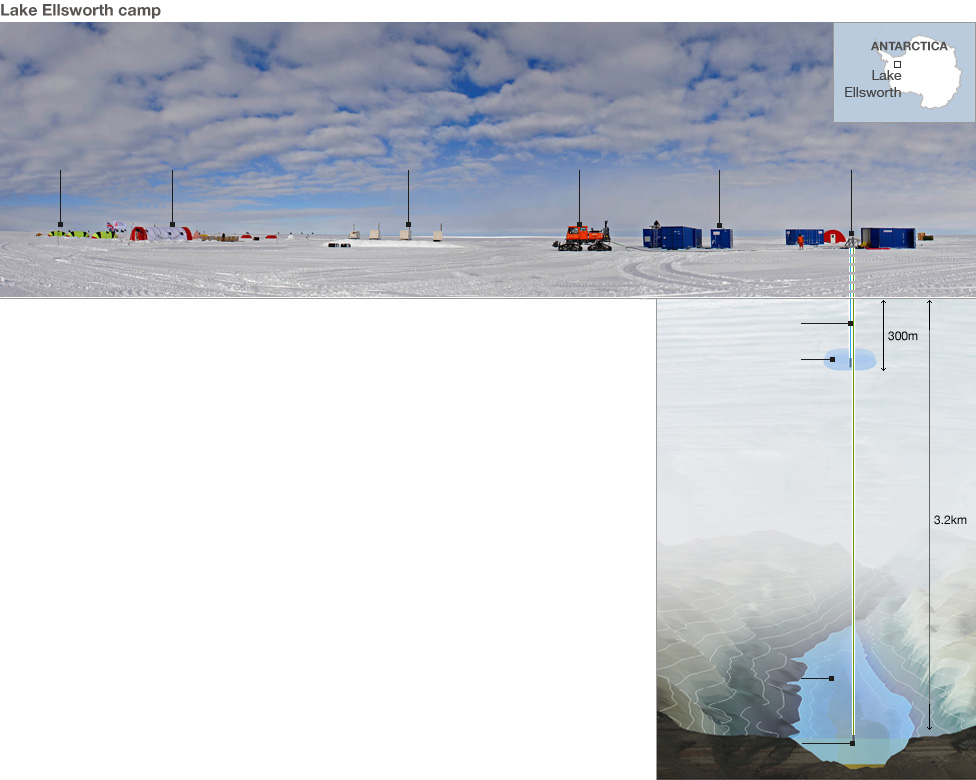 Sleeping tents
Work and social tent
Generators
Specialist vehicle
Equipment containers
Drill hole
Boreholes
Hot water cavity
Lake Ellsworth
Sampling equipment
Play intro
Sleeping tents
Work and social tent
Generators
Specialist vehicle
Equipment containers
Drill hole
Boreholes
Hot water cavity
Lake Ellsworth
Sampling equipment
Play intro
Introduction to the mission
BBC science editor David Shukman explains the technical challenges facing the British team and why the mission could reveal crucial information about the limits of life on earth and elsewhere.
Work and social tent

As well as sleeping tents, the group also has the use of larger tents, used as work and social areas. They contain banks of laptops, communications equipment and kitchen facilities. A resident professional chef provides the team with homemade meals and fresh bread every day.
Generators
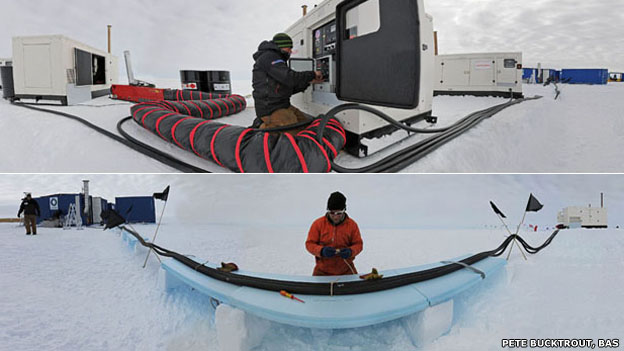
The entire site is powered by electricity from a bank of generators (top). The generators and their essential cables (below) provide enough power - the equivalent of 256kW - to drive the entire site, including the water filtration systems, winches and pumps.
Specialist vehicle
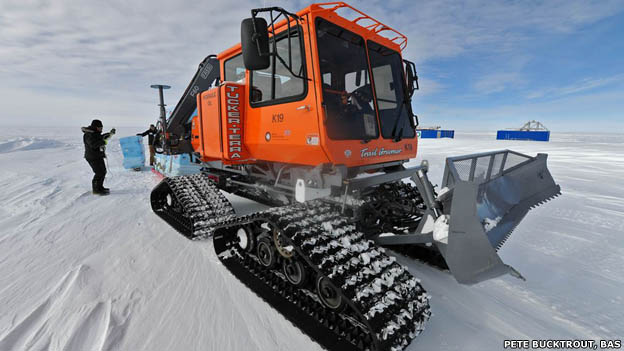
The on-site Sno-Cat vehicle has helped the team transport equipment needed for the drilling mission. It is also used to lift heavy cargo and shovel snow.
Equipment containers
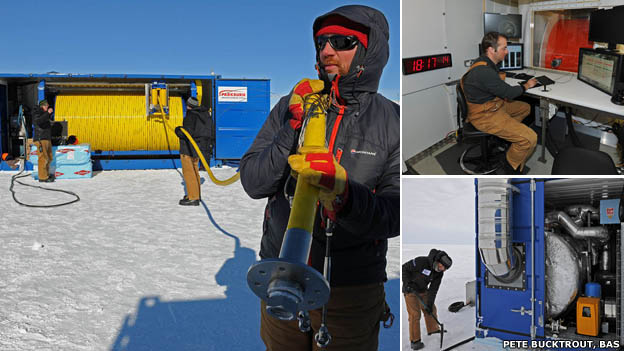
A series of containers houses the team’s key equipment, including the boiler (bottom right) used to melt the snow to feed the hot water drill, the hose reel (main image), winches (top right) and pumps. The containers were towed by tractor train 250km through the Ellsworth mountain range.
Drill hole
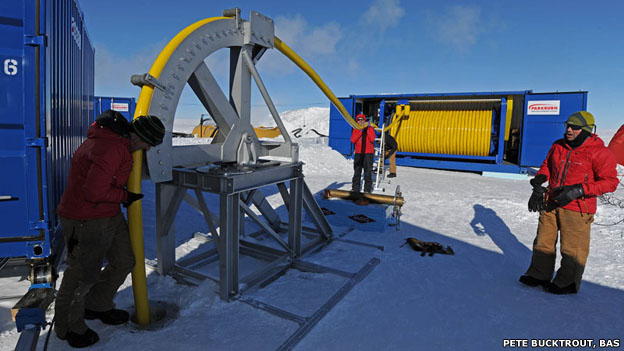
Using a high-pressure hot-water drill specially designed for the mission, the team is boring a hole through 3.2km of solid ice all the way down to Lake Ellsworth. The hot-water drill, designed by British Antarctic Survey engineers, will take about five days in total to reach the lake.
Boreholes
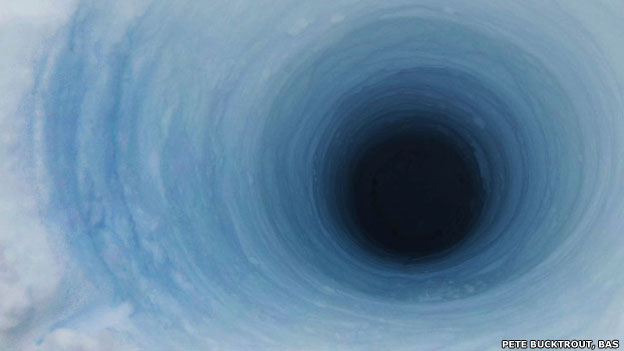
The team is drilling two boreholes. The first to create a hot water cavity to balance Ellsworth's pressure and a second down to the lake. The second is used to deploy sampling equipment. This borehole can only be kept open for 24 hours before it refreezes to an unusable size.
Hot water cavity
Before the team drills down to the lake, they have to create a shorter borehole 300m beneath the ice to make a chamber to house a water pump. This balances pressure on the lake and prevents water rushing back up the borehole. Click play to listen to engineer Chris Hill explain.
Lake Ellsworth
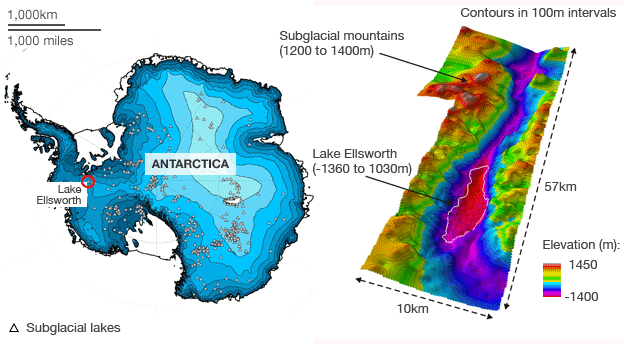
The ancient lake - isolated for hundreds of thousands of years - is buried under 3.2km of ice on the West Antarctic Ice Sheet. It is equivalent in size to the UK’s Lake Windermere. Geothermal heat from the Earth’s core and the pressure of the ice above keeps it liquid.
Sampling equipment

A 5.5m-long titanium water sampling probe (left) is being deployed to capture water samples and grab “goo” from the lake bed. A sediment corer (right) will collect mud samples. Both are protected by plastic to ensure they remain uncontaminated.
Sleeping tents
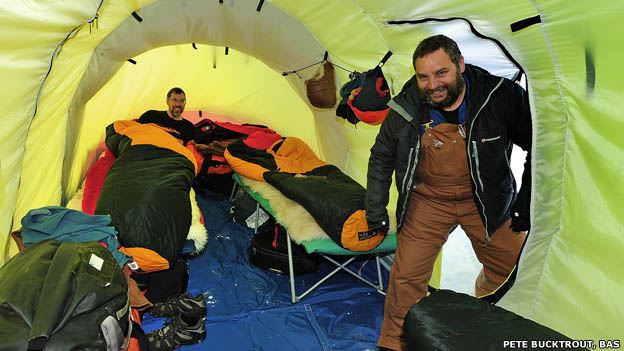
The 12-man team of scientists, engineers and logistics experts spend their nights in four-man clam tents or pyramid tents. It took them five days of flying to reach the camp and four weeks to set up living and working facilities. They are enduring temperatures of -25C and winds of up to 20 knots.
Images and video courtesy of Pete Bucktrout of the British Antarctic Survey. Graphic not to scale.
Produced by: Lucy Rodgers, Mick Ruddy and Steven Connor
- Published4 December 2012
- Published27 November 2012

